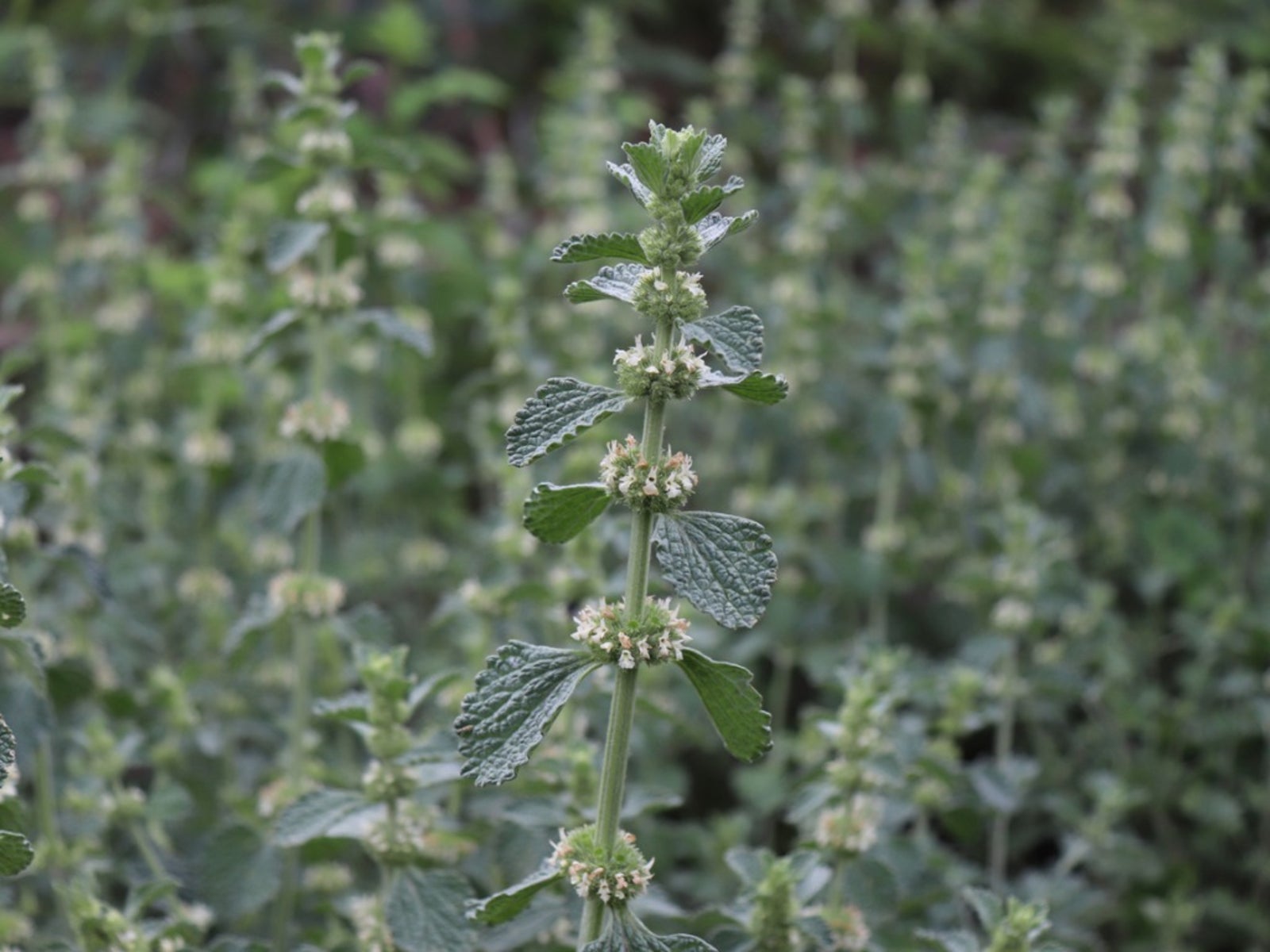Horehound Plant: How To Grow Horehound


The horehound herb plant is a member of the mint family and looks quite a bit like the popular herb. Crinkled, slightly hairy leaves are characteristic of the horehound plant. The plant is the source of the flavoring for old fashioned horehound candy. The plant is easy to grow in even poor soils and is a hardy perennial over chilly winters down to USDA Zone 4.
What is Horehound?
Horehound (Marrubium vulgare) is a woody stemmed herb that can grow 2 to 2 ½ feet (61-71 cm.) tall. It is a wild herb commonly found in disturbed soils, roadsides, and dry scrublands. The slightly serrated leaves are arranged alternately on the stem and small clustered white, purple, or pink flowers form at the axils in summer. The horehound herb plant is packed with nutritional benefits including high amounts of Vitamins A, B, C, and E. Horehound plants have an interesting history of medicinal uses. The leaves can be dried and used to make tea and the leaves can be stored for up to a year in a jar. The oil can be expressed and used in perfumes and potpourri. The strong flavor is used in cough drops, candy, and liqueurs. Stems can be steeped for tea or as a tincture.
How to Plant Horehound
The horehound herb plant can be planted from seed, cuttings, and division. Plant the seed three weeks before your last expected frost date. The seeds are surface sown and covered with a dusting of soil to prevent the wind from taking them. When planning how to plant horehound remember the germination difficulties of the seed. Even moisture is important to encourage sprouting which is erratic. Seedlings are thinned to 10 inches (25 cm.) apart, and you can harvest the leaves after the plant flowers.
Tips for Growing Horehound
Horehound is grown in full sun and well drained soil. The plant's other requirements are minimal as it can spring up naturally in nutrient deficient areas and sandy soils. Horehound produces a burr-like seed pod which contains tiny seeds. The seeds are slow to germinate and do not need to be sown deeply. Prior to seeding the horehound plant cultivate the soil and rake it to remove roots, rocks and debris. Once established horehound needs little supplemental irrigation and can actually diminish the plant's health. The herb is adapted to low fertility areas but an all-purpose fertilizer can be applied in spring to encourage foliage growth. Horehound has no significant pest or disease problems.
Horehound Plant Cautions
Horehound is an invasive plant much like the mints. It's a good idea to plant it in an area with plenty of room or to confine it to a pot. Cut off the flowers to minimize the spread of the plant as horehound seeds itself. The home gardener needs only two or three plants for personal use.
Gardening tips, videos, info and more delivered right to your inbox!
Sign up for the Gardening Know How newsletter today and receive a free copy of our e-book "How to Grow Delicious Tomatoes".

Bonnie Grant is a professional landscaper with a Certification in Urban Gardening. She has been gardening and writing for 15 years. A former professional chef, she has a passion for edible landscaping.
-
 Looking For Plants To Give You The Soft And Fuzzies? Try These 5 Fuzzy Leaf Plant Options
Looking For Plants To Give You The Soft And Fuzzies? Try These 5 Fuzzy Leaf Plant OptionsLovers of texture, drama, silver foliage and tactile plants will adore these special sensory garden additions. These fuzzy leaf plant options will leave you all aglow
By Susan Albert
-
 Get Ready For A Summer Of Hummers! Grow These Full Sun Hummingbird Plants and Flowers
Get Ready For A Summer Of Hummers! Grow These Full Sun Hummingbird Plants and FlowersIf you’re lucky enough to enjoy a sunny backyard, make sure you are maxing out on your pollinator opportunities and grow these full sun hummingbird plants and flowers
By Tonya Barnett